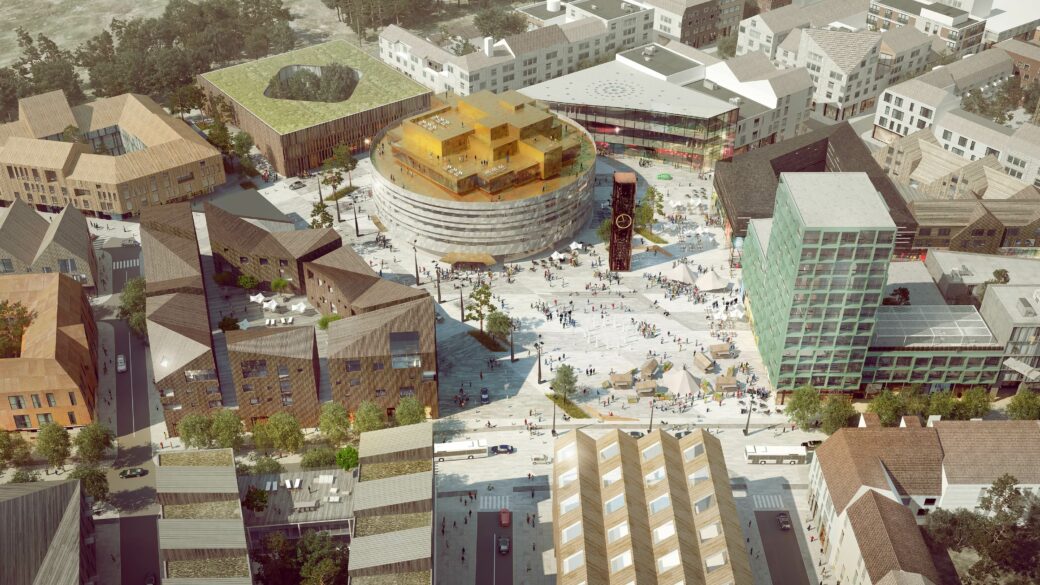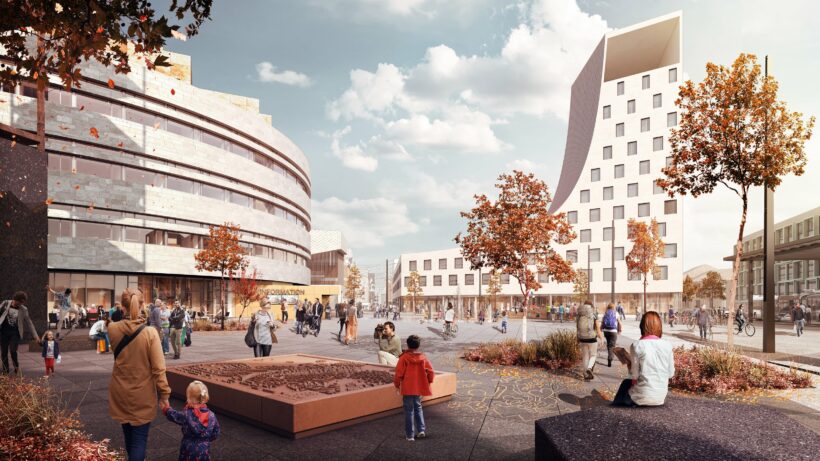
Thermal Comfort analysis at Kiruna Square
When designing the new central square in Kiruna, Sweden, emphasis has been placed on creating a comfortable microclimate that mitigates the extreme cold climate. This project presents a methodology developed to evaluate the effect of floor surface material and tree density on the outdoor thermal comfort in the square.
Project Period
Material choices impact thermal sensation
The evaluation of thermal comfort is complex as it involves many parameters: air temperature, radiant temperature from surrounding objects, relative humidity, wind speed, clothing level and activity level. Material choice can impact the thermal sensation in areas with a high direct sunlight exposure.

Trees impact pedestrian thermal sensation in Kiruna's central square
Research results from Kiruna show that the material choice has an impact in places with high direct sunlight exposure, especially during the warmer seasons. The results show that light granite, compared to dark granite, attains an average of 40 additional minutes of thermal comfort per day during summer. Trees reduce both direct sunlight access and wind exposure, factors which have a significant impact in pedestrian thermal sensation.